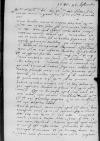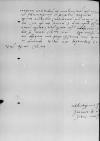Reverendissime et Excellentissime Domine, domine gratiosissime.
Post debitam servitiorum meorum in gratiam Vestrae Reverendissimae Celsitudinis commendationem.
Nunc tandem animi et corporis dotes Vestrae Reverendissimae Celsituditds non noscere solum, sed vehementer admirari coepi, dum apud ⌊caesaream catholicam maiestatem⌋ ⌊principum⌋ meorum nomine nuntium egi. Nemo enim est non in aula[1] solum, sed in omnibus ⌊Superioris Inferiorisque Germaniae⌋ partibus, qui virtutem, ingenium, doctrinam, humanitatem, eloquentiam, affabilitatem Reverendissimae Celsitudinis Vestrae infinitis laudibus non praedicet, et, ut ipsimet fatentur, nullum umquam fuisse et neque futurum oratorem, qui simile sui desiderium apud illos reliquerit. Infanda certe et immensa res, quae etiam humanam naturam superare videtur, tot tantisque placuisse viris, ut nullum sermonis et alloquendi sit omnibus argumentum, quam de valetudine et incolumitate Vestrae Reverendissimae Celsitudinis quaerere. Habent equidem ⌊principes⌋ nostri et totum ⌊Poloniae Regnum⌋ ingentem laudem et gloriam Vestrae Reverendissimae Celsitudinis nomine. Ego me hic presto apud suas maiestates et totam aulam iustum preconem incredibilium laudum Reverendissimae Celsitudinis Vestrae praestaboque perpetuo. Cui me et observantiam meam perpetua
<m>
addico.
Dominus ⌊de Granvella⌋, primae auctoritatis apud ⌊caesaream maiestatem⌋ homo, amicissime Vestram Reverendissimam Celsitudinem salutat seque ei commendat. Eius ⌊⌋ Reverendissimae Celsitudini Vestrae mitto. ⌊Princeps Aranze⌋ ⌊comitis a Nassau⌋ filius, ⌊comes de Buren⌋, ⌊comes von Fryzland⌋, Achacius quondam apud ⌊Anglum⌋ et nunc quoque istic missus orator, Erhardus de Dana, vicecapitaneus drabantorum et, ut brevius dicam, tota caesaris aula precatur Vestrae Reverendissimae Celsitudini exoptatam corporis valetudinem et incolumitatem et atque omnis boni florentissimum et perpetuum augmentum.
Reverendissimus ⌊archiepiscopus Cantuariensis⌋, cui ⌊iuvenem⌋ quendam (ut ipse ait sororium), dum apud ⌊caesaream maiestatem⌋ oratorem agebat, Vestra Reverendissima Celsitudo addixerat, comme[n]dat se amori Celsitudinis Vestrae.
Ego rursum et iterum obsequia mea propensissima Vestrae Reverendissimae Cel[situdi]ni commendo.


